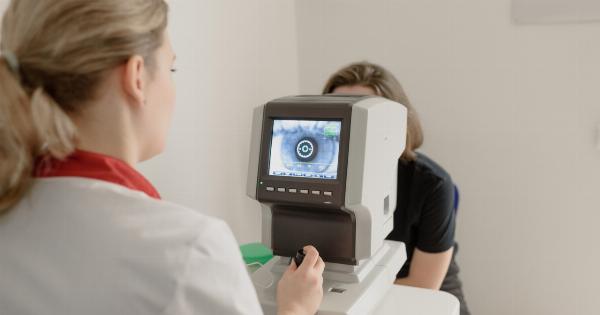Retinal detachment is a serious condition that can result in permanent vision loss if not treated promptly. It occurs when the retina, which is the light-sensitive tissue at the back of the eye, separates from its normal position.
While retinal detachment can affect individuals of all ages, it is particularly alarming when it occurs in children.
In the Balkan region, access to specialized medical care for retinal detachment in children has been limited, leading to a significant gap in the treatment options available.
However, through the collaborative efforts of medical professionals from various Balkan countries, a groundbreaking inter-Balkan intervention was recently conducted, providing hope for children suffering from this condition.
The Challenge of Retinal Detachment in Children
Retinal detachment in children can occur due to various reasons, including trauma, eye surgery complications, or genetic abnormalities. It often goes unnoticed in its early stages, making early detection and intervention crucial.
If left untreated, retinal detachment can lead to vision impairment or even blindness.
However, the treatment options available for retinal detachment in children have been limited in the Balkan region. The lack of specialized tools, equipment, and expertise has hindered early diagnosis and appropriate intervention.
The Power of Inter-Balkan Collaboration
Recognizing the urgent need to bridge this gap in healthcare, a group of medical professionals from different Balkan countries came together to initiate an inter-Balkan collaboration for pediatric retinal detachment.
This collaboration brought together ophthalmologists, vitreo-retinal surgeons, nurses, and other medical personnel to collectively find solutions and offer effective treatment options for affected children.
The collaborative effort aimed to address various challenges, including:.
1. Access to Advanced Diagnostic and Surgical Equipment
One of the key hurdles in treating retinal detachment in children within the Balkan region was the lack of access to advanced diagnostic and surgical equipment.
Through the collaborative effort, medical professionals were able to pool their resources and share equipment, ensuring that children received the necessary diagnostic tests and surgeries.
2. Training and Knowledge Sharing
Another crucial aspect of the inter-Balkan collaboration was the opportunity for training and knowledge sharing among medical professionals.
Experienced ophthalmologists and vitreo-retinal surgeons from different countries conducted workshops and seminars, teaching their peers the latest techniques and advancements in retinal detachment treatment. This ensured that the knowledge and expertise were spread across the region, benefiting a larger number of children.
3. Awareness and Outreach Programs
Creating awareness about retinal detachment in children and its potential consequences was another essential component of the collaboration.
Medical professionals conducted outreach programs and awareness campaigns in schools, community centers, and healthcare facilities, educating parents, teachers, and healthcare workers about the signs and symptoms of retinal detachment. Early detection was emphasized to improve treatment outcomes.
The First Inter-Balkan Intervention
After months of planning and preparation, the first inter-Balkan intervention for a child with retinal detachment was successfully conducted.
The intervention involved a multidisciplinary team of medical professionals who worked together to diagnose and treat the child’s condition.
The collaborative effort ensured that the child received timely and appropriate treatment, including advanced surgical procedures to reattach the retina.
The successful outcome of this intervention gave hope to other children and their families who had been struggling with limited treatment options.
The Road Ahead: Expanding the Inter-Balkan Collaboration
The success of the first inter-Balkan intervention for retinal detachment in a child has opened doors for further collaboration and expansion across the region.
The medical professionals involved are determined to continue their efforts in bridging the healthcare gap for pediatric retinal detachment.
Future endeavors include:.
1. Establishing Centers of Excellence
Bolstering the existing infrastructure by establishing specialized centers of excellence for pediatric retinal detachment is one of the primary goals.
These centers would be equipped with state-of-the-art diagnostic and surgical facilities, ensuring that children receive the best possible care.
2. Strengthening Research and Development
Ongoing research and development efforts are necessary to further improve the treatment outcomes for retinal detachment in children.
The inter-Balkan collaboration aims to foster research initiatives, enabling medical professionals to explore new techniques and innovative approaches in this field.
3. Collaboration with International Institutions
Expanding the collaborative efforts beyond the Balkan region is crucial for sustained progress.
Partnering with international institutions and organizations specialized in pediatric ophthalmology can provide further expertise, resources, and funding opportunities.
The Brighter Horizon for Children with Retinal Detachment
The first inter-Balkan intervention for a child with retinal detachment has shown the power of collaboration in healthcare.
By joining forces, medical professionals have successfully bridged the gap in access to specialized care for children suffering from this condition.
The journey towards comprehensive care for pediatric retinal detachment in the Balkan region has just begun, but the progress made by this inter-Balkan collaboration brings hope for a brighter future for children’s vision.



























